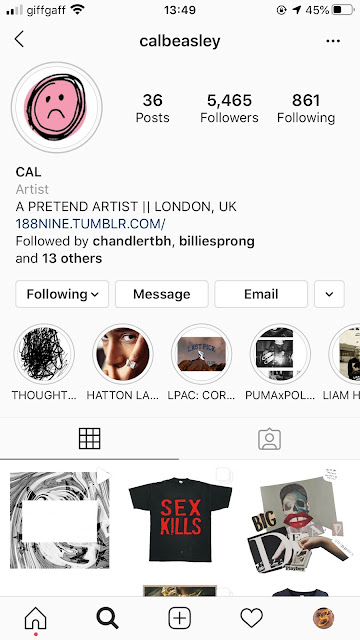Email exchange with Emanuele, including preference for materials and questions for interview book
Hello Emanuele,
Here’s where I’m up to at the moment and a set of 5 questions for you to answer please.
I have included 2 variant T’s for the high form, less legible typeface, with one of them featuring a traditional circular bottom, let me know what you think! :)
The more functional body text is also fully type-able although some of the kerning might need a little work so by all means try it out!
Also which of these martial’s do you think best reflects your craft? (I appreciate none are perfect but I’m going to try and get something better in to make a screen printed flag):
Pigment cotton (sateen)
reactive cotton (poplin)
reactive cotton (dwill)
reactive silk (twill)
reactive silk (organza)
Here are the 5 questions:
How important is contrast of forms within your work?
Do your garments have a life when not worn on a human body or is the body a vital element?
Which artists or designers influence your work most and how?
What relationship do silhouette and structure have within your work?
Within your practice does form follow function or function follow form?
Thank you sooo much for your time, I’ll send you a text now!
Also don’t worry too much if you can’t reply to all this tonight, I can easily find another place to print it.
Thanks,
Sol
|
Tue, 3 Dec, 23:44 (9 days ago)
|   | ||
| ||||
Hey pal,
I am very grateful for the time you dedicated to this and I am glad for your interest in my project!
In order of preference:1. Reactive silk (twill)2. Reactive cotton (poplin)3. Reactive cotton (twill)
Here are the 5 questions:
How important is contrast of forms within your work?
My designs often pay homage to the art of men's tailoring, therefore my silhouettes enhance the shapes of the body rather than contrasting them. Negative spaces, on the other hand, are really important to my practice as they allow to expose the fragile flesh that menswear has been trying so hard to cover, still maintaining a tasteful approach.
Do your garments have a life when not worn on a human body or is the body a vital element?
Emanuele Piarulli Studio kindled from a friction between the sartorial rules imposed by a patriarchal view of the world and the lust for hedonistic self-expression. The body is therefore vital, as the pieces I design are nothing but an extension, a medium in the performance of one's masculine identity through a voyeuristic game.
Which artists or designers influence your work most and how?
The Antwerp Six are always a firm point of reference at the early stages of my creative process. Generally speaking, I have a soft spot for a rebel with a cause and they all managed to distinguish themselves for their ability to break the rules demonstrating, at the same time, a thorough understanding of them. Ann Demeulemeester, in particular, embodies a notion of masculinity that is dear to me, based on the seductive awareness of the body with moments of flamboyance and romantic finery. As a consequence, my stylistic choices are very much influenced by those of the Belgian creative: decadent taste, a natural instinct for sophistication counterbalanced by a desire for edgy rebellion, languid tailoring reinterpreted through sinuous fabrics.
What relationship do silhouette and structure have within your work?
Due to the fact that my pattern cutting often relies on the principles of tailoring, the structure of my garments is strictly connected to the silhouette of the male body. The solid inner structure of a blazer, for example, aims to enhance the male torso and the broadness of the shoulders, whereas the bias-cut has the power to subtly underline the muscles while creating allusive draping.
Within your practice does form follow function or function follow form?
As mentioned before, my pieces are a representation of the desire to blur the boundaries of a traditional men's sartorial repertoire as a form of rebellion against the patriarchy. The design development comes afterwards. My mind generates ideas manipulating classic items of menswear to follow a function. In other words, form follows function.
Very best wishes,
Emu x
|
Wed, 4 Dec, 02:06 (8 days ago)
|   | ||
| ||||
Hiya,
Thanks again so much for all this at short notice!
I’ll keep you up to date with how it’s going and look towards to the future of your studio.
Sol  x
x
*retrospective add to #fashioning the industry*
*retrospective add to #fashioning the industry*



Comments
Post a Comment